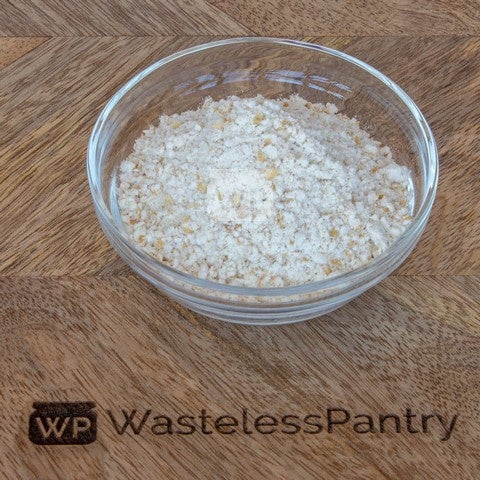Wholemeal flour, also known as whole-wheat flour, has become a staple in kitchens around the world. It is celebrated for its rich nutritional profile and versatility in cooking and baking. Derived from grinding the entire wheat kernel, including the bran, germ, and endosperm, wholemeal flour retains its natural fiber, vitamins, and minerals. Let’s delve into the benefits, uses, and tips for incorporating this wholesome ingredient into your diet.

What is Wholemeal Flour?
Wholemeal flour is made by milling whole wheat grains without removing any part of the kernel. It contrasts with white flour, which is refined to remove the bran and germ, resulting in a lighter texture but fewer nutrients. Wholemeal flour’s coarse texture and slightly nutty flavor make it a distinctive ingredient in many recipes.
Nutritional Benefits
Wholemeal flour is packed with essential nutrients, making it a healthier alternative to refined flour. Some of its key benefits include:
Rich in Fiber
Wholemeal flour is high in dietary fiber, which promotes better digestion, regulates blood sugar levels, and keeps you feeling full longer.
Loaded with Vitamins and Minerals
It contains B vitamins, iron, magnesium, and zinc, essential for energy production, healthy bones, and a robust immune system.
Heart Health
The fiber content helps lower cholesterol levels and supports cardiovascular health.
Low Glycemic Index
Wholemeal flour is digested slowly, preventing spikes in blood sugar and making it a great choice for individuals with diabetes.
Common Uses in Cooking and Baking
Wholemeal flour’s versatility allows it to shine in various dishes. Here are some popular ways to use it:
Baking Bread
Wholemeal flour is a key ingredient in whole-wheat bread, providing a hearty texture and earthy flavor.
Pastries and Desserts
From cookies to muffins, wholemeal flour can add a wholesome twist to sweet treats. It pairs well with natural sweeteners like honey or maple syrup.
Pizza Dough and Pasta
For a nutritious spin on classic recipes, replace refined flour with wholemeal flour in pizza dough or homemade pasta.
Thickening Soups and Sauces
Its rich texture makes it an excellent thickening agent for soups, stews, and sauces.
Tips for Using Wholemeal Flour
Blending with Other Flours
Wholemeal flour can make baked goods denser. For a lighter texture, consider mixing it with all-purpose flour in a 50-50 ratio.
Adjust Liquid Ingredients
Wholemeal flour absorbs more liquid than white flour, so you may need to increase the amount of water or milk in your recipes.
Storage
Due to its natural oils, wholemeal flour can spoil faster than refined flour. Store it in an airtight container in a cool, dark place, or refrigerate it for extended freshness.
Experiment Gradually
If you’re new to wholemeal flour, start by substituting a portion of white flour in your recipes and gradually increase the amount as you adjust to the flavor and texture.
Conclusion
Wholemeal flour is more than just a healthier alternative; it’s a flavorful and versatile ingredient that can elevate your culinary creations. Whether you’re baking bread, whipping up a batch of pancakes, or crafting a savory crust, wholemeal flour adds a nutritious touch to your meals. Embrace the benefits of wholemeal flour and enjoy the wholesome goodness it brings to your table.
